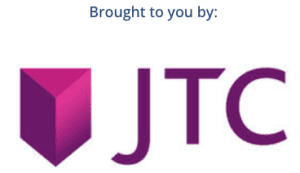JTC and IIUSA present a virtual event where an expert panel will discuss what we’ve learned about the new era of EB-5.
When the EB-5 Reform and Integrity Act of 2022 was passed, there was a lot of uncertainty around how its many new rules and program changes would be applied. Now that some time has passed and we’ve seen the RIA era in action, what have we learned?
IIUSA and JTC are teaming up to answer this question by assembling a panel of EB-5 experts to discuss how EB-5 is working and what the future may have in store. They’ll be sharing these insights at a unique event in September 2023.
The webinar
On Wednesday, September 20, 2023, join us for, “18 Months Into RIA, Where Are We Now?” Hosted by IIUSA and presented by JTC, this virtual event can be watched online from around the world, and will include an expert panel of speakers from different parts of the industry discussing the implementation of the RIA and how the industry has adjusted.
The wide-ranging discussion will cover topics like the RIA’s integrity rules, USCIS processing times, and how participation from both issuers and investors has changed since the renewal of the Regional Center program. Here is just a glimpse of what may be discussed as the panelists address questions many of us had at the RIA’s passage, as well as some we’re still looking for answers on.
The RIA’s new integrity measures
Among the RIA’s changes was a long list of integrity measures, including a fund administration requirement, with steep penalties for violation of these new rules. At the time, there was a lot of confusion as to how these rules would be implemented and whether Regional Centers would be able to adapt.
According to Jill Jones, General Counsel at JTC Group and moderator of the upcoming webinar, the biggest challenge was “the lack of clarity around what exactly will be expected from the Regional Centers and issuers to comply with the new requirements.” In fact, some rules still have yet to be clearly defined.
“The 60-day period post-enactment has long come and gone, and regulations have yet to be issued. In the meantime, Regional Centers and issuers are making their best guesses, and USCIS appears to be exploring what they want to see by issuing record numbers of RFE’s.”
While some elements have become clearer in the wake of the RIA, there is still a lot we don’t know. At the webinar, the panel will discuss how Regional Centers and fund administrators continue to adjust to new clarifications, and the best way to prepare when the specifics of how rules will be interpreted isn’t always clear.
Has program participation decreased?
When the RIA was passed, some feared its rules would be too strict for investors, issuers, and developers to understand and comply with, and EB-5 would ultimately find itself DOA. 18 months later, has interest returned to pre-RIA levels? Are there enough projects to meet investor demand?
Panelist Thomas Martin, Managing Director/Community Impact Director at Baker Tilly, said that “while there are some additional requirements that issuers will need to incorporate into their EB-5 offerings, there are great projects available to investors, with many more coming soon.” He added that doomsday predictions were largely overblown.
“Interest is likely even greater than pre-RIA levels,” said Martin.
So how can issuers get up to speed with RIA requirements and get projects started quickly to take advantage of this increased investor demand? At the webinar, the panel will discuss where the best opportunities currently lie as we continue to see which projects are succeeding under the RIA.
Visa queues and processing times
In July 2023, USCIS announced a change to how it manages its I-526 queues that involves grouping petitions by NCE. How will this affect processing times? And how might it affect which investors go after which projects?
According to Roy Carrasquillo, Managing Shareholder, Carrasquillo Law Group, “this new approach will affect applications filed prior to the effectiveness of the RIA.” He clarified that it’s still “uncertain at this time if the new I-526E petitions filed under the RIA would be evaluated under the proposed 3 queues.”
That means we don’t know yet how this change will ultimately affect processing times or if further changes will be made for newer projects, but Carrasquillo is optimistic.
“Although we have not seen an effect yet on our clients’ pending I-526 applications, we hope that this new process will increase efficiency and reduce the long processing times for EB-5 investors,” he said. “The next few months will show the effectiveness of this new strategy implemented by USCIS and whether a similar strategy will include new applications under the RIA.”
When might we see more complete data, and what are investors’ best options for fast adjudication based on what we’ve seen so far? The panelists may have some insights to share at the webinar, including how the RIA’s visa set-asides have fared over the past 18 months.
Rural visas and priority processing
The Reform and Integrity Act included a provision for 20% of visas to be reserved for rural investments, with priority processing given to those applications. Just how fast this priority processing would be was unclear at the time, but there have been recent reports of I-526E processing times of less than a year for rural investments.
A common opinion upon the bill’s passage was that these reserved visas would bring renewed interest from investors from countries like China with long wait times. Some skeptical observers cautioned the 20% quota could quickly be reached, reducing the appeal of rural projects. Has the projected demand for rural projects panned out, or was it all hype?
We asked panelist Dan Wycklendt, President at FirstPathway Partners and Director of IIUSA, about reports of processing times of less than a year for rural investments.
“It is encouraging to see USCIS paying attention to provisions in the RIA,” he said. “This provides stakeholders with hope that USCIS may ultimately reach RIA legislated goals and the USCIS internal cycle time goal of less than 6 months for processing any I-526E petition, regardless of the project’s location.”
In the meantime, he said, “more investors have reached out to inquire about the options for rural projects, but with that comes the question of when the 20% allocation for those visas will be reached.” The problem, said Wycklendt, is a lack of comprehensive data.
“USCIS has only provided data on the total number of I-526Es filed through March 31, 2023, without distinction of class (unreserved vs set-aside) or chargeability (country). Although the totals indicate that there will likely be room for set-aside visas, both rural and high-unemployment, we cannot be certain until USCIS provides more information and data. If we could actually get that kind of transparency, it would allow us to give investors a realistic picture of what their options truly look like.”
Rural projects were a major topic of discussion at the passage of the RIA, and the webinar panelists may have further insights into their popularity based on what we now know about processing times.
But these aren’t the only topics that will likely come up at the webinar. Thanks to our panelists’ wide range of experience and knowledge, we can get a picture of how the industry is functioning in the wake of the RIA. What might EB-5 look like in a year? And what can investors and issuers do now to position themselves for success? These are the right people to ask.
How you can watch the event
We encourage all EB-5 stakeholders to take part in this unique experience where some of the best minds in the industry will discuss what they’ve learned by being on the forefront of the new era of EB-5.
The details of the webinar are:
18 Months Into RIA: Where Are We Now?
Wednesday, September 20th, 2023
12:00 – 1:00pm ET
To learn more and RSVP to attend the webinar, click here. Note that registration is FREE for IIUSA members. Non-member registration is $25 – or join today for complimentary access.









